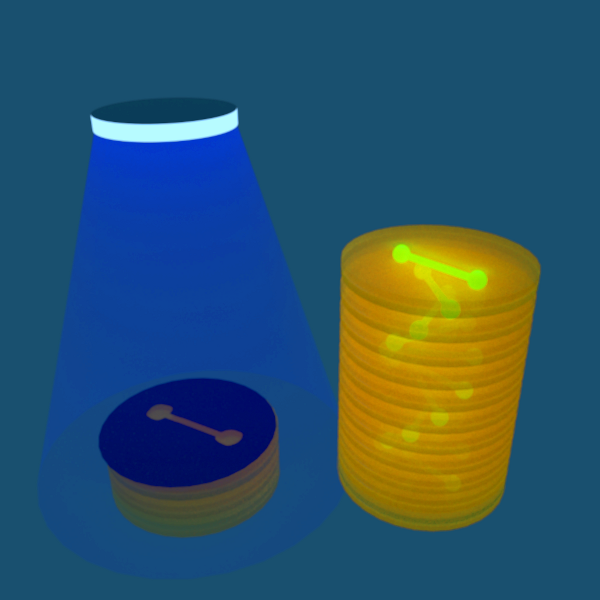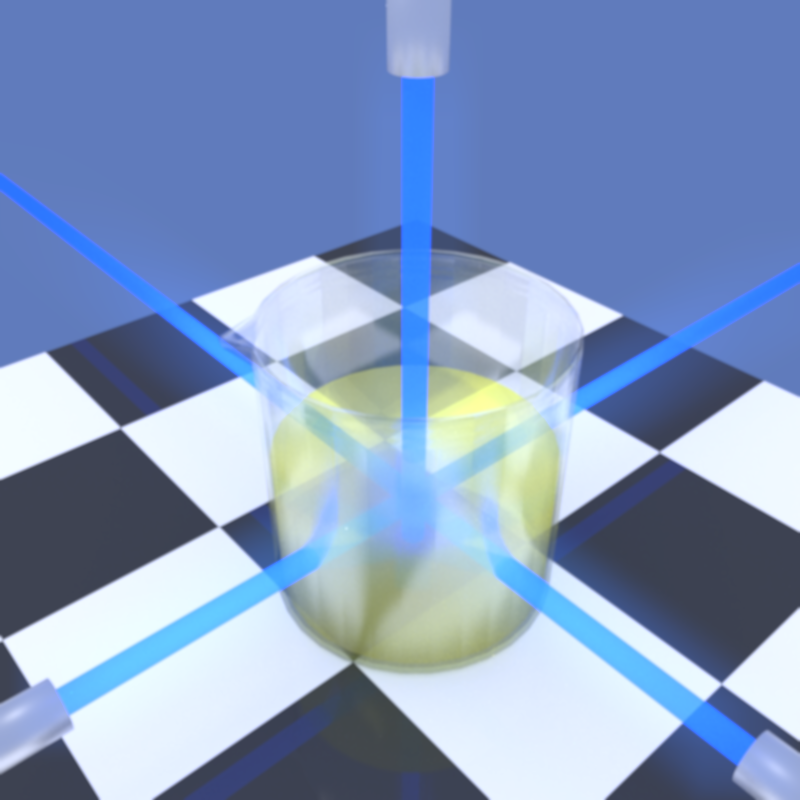Team:Peking/Project/3D/3D
From 2012.igem.org
| Line 18: | Line 18: | ||
The principal advantage of our system for 3D printing is the "graver"--light. Light is a cheap source with high spatial resolution, allowing for us to fabricate complex objects. The use of transparent LB or M9 medium allows light to be exposed to the entire culture. We’ve attempted 3D printing with our <i>Luminesensor</i>. <br/><br/> | The principal advantage of our system for 3D printing is the "graver"--light. Light is a cheap source with high spatial resolution, allowing for us to fabricate complex objects. The use of transparent LB or M9 medium allows light to be exposed to the entire culture. We’ve attempted 3D printing with our <i>Luminesensor</i>. <br/><br/> | ||
| - | We tried the current method--building up layer by layer. About more details, three identical masks were made and just as in 2D printing, after exposed to parallel light of 12hours, we obtain a series of luminous steps forming stairs by putting them layer by layer. | + | We tried the current method--building up layer by layer. About more details, three identical masks were made and just as in 2D printing, after exposed to parallel light of 12hours, we obtain a series of luminous steps forming stairs by putting them layer by layer.Figure 1 demonstrates the basic device for 3D printing. <br/><br/> |
</p> | </p> | ||
<p> | <p> | ||
Revision as of 06:20, 25 September 2012
3D Printing
3D printing is a new technology that has been rising for many years. It is a form of additive manufacturing technology where a three dimensional object is created by laying down successive layers of material. The tools are effectively modified ink-jet printers that deposit successive layers of material until a three-dimensional object is built up. The methods for 3D printing in manufacturing are quite developed, but in synthetic biology, there have been only a few attempts made. We believe that 3D printing can be utilized in many applications in both medical and manufacturing, such as with the synthesis of artificial vessels, organs, or bone tissues, and the creation of high-order biomaterials based on the high spatial resolution of the light. With more precise control of the response threshold of the optic biosensor, we can obtain holographic images from a solid medium.
Most modern 3D printers work by printing layer by layer. This is done by ‘cutting’ visual objects into 2D slides and printing each layer onto a surface. This process is both slow and these devices require precise programming .
The principal advantage of our system for 3D printing is the "graver"--light. Light is a cheap source with high spatial resolution, allowing for us to fabricate complex objects. The use of transparent LB or M9 medium allows light to be exposed to the entire culture. We’ve attempted 3D printing with our Luminesensor.
We tried the current method--building up layer by layer. About more details, three identical masks were made and just as in 2D printing, after exposed to parallel light of 12hours, we obtain a series of luminous steps forming stairs by putting them layer by layer.Figure 1 demonstrates the basic device for 3D printing.

Figure 1a. the device used in the 3D printing.
Later, we tried a different approach. We inoculated a liquid culture of bacteria with LB medium and constructed a set-up that emits three orthogonal beams through the beaker. After incubation for 12 hours, we obtained a beaker culture with light (GFP) emitting bacteria with an orthonormal basis made of cultures without GFP expressed. Since the LB medium has a slight brightness under the light that can also excite GFP due to yeast extract being one of the ingredients in the LB medium, it is in some way an uncertain composition. We used a synthetic medium, M9 medium later because of its transparent property and chemical definition.

Figure 1b. the device used in the 3D printing.
Taking into consideration the most common application of 3D printing, the construction of a visual object, we also proposed to build a biobrick containing agarase, the enzyme that decompose agar and agarose, controlled by Luminesensor. As as a result, the light leads to the inhibition of the agarase expression, and the dark leads to the decomposition of the medium. This experiment will implement objects sculptured by light.
Reference
- 1. Lam, C.X.F., Mo, X.M., Teoh, S.H., Hutmacher, D.W.(2002) Scaffold development using 3D printing with a starch-based polymer. Mat. Sci. Eng. C., 20: 49: 56
- 2. Nicola Jones(2012).Science in three dimensions: The print revolution. Nature, 487: 22: 23
- 3. Leukers, B., Gulkan, H., Irsen, S.H., Milz, S., Tille, C., Schieker, M., Seitz, H.(2005) Hydroxyapatite scaffolds for bone tissue engineering made by 3D printing. J. Mater. Sci. Mater. Med., 16: 1121:1124
- 4. Erickson, B., Singh, R., Winters, P.(2012) Synthetic Biology: Regulating Industry Uses of New Technologies. Science, 333:1254:1256
- 5. Khalil, A.S., Collins, J.J.(2010)Synthetic biology: applications come of age. Nat. Rev. Genet., 11:367: 379
 "
"














